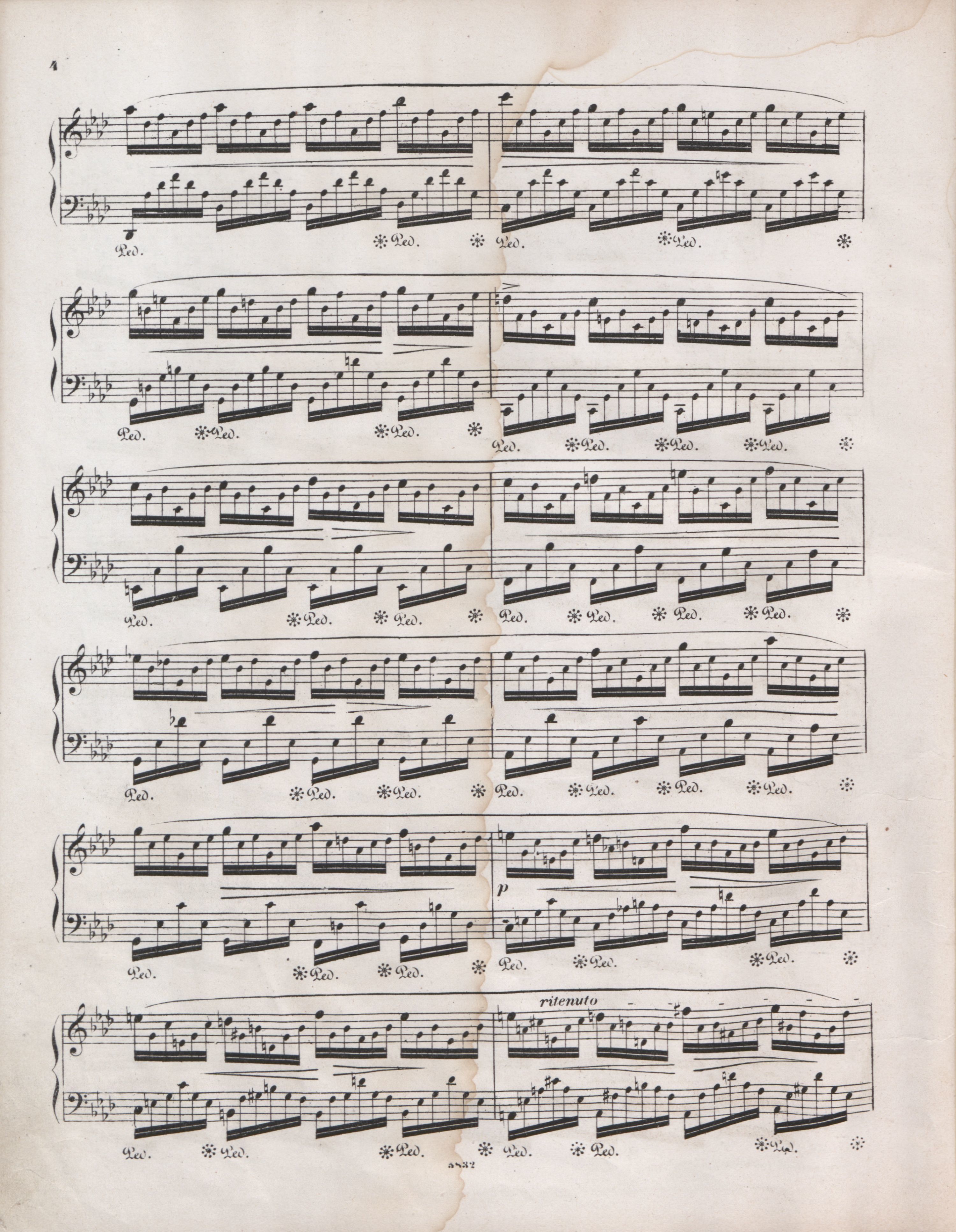Op. 2, Variations in B♭ major
Op. 10, 12 Etudes
Op. 11, Concerto in E minor
Op. 21, Concerto in F minor
Op. 22, Polonaise in E♭ major
Op. 24, 4 Mazurkas
Op. 25, 12 Etudes
Op. 26, 2 Polonaises
Op. 27, 2 Nocturnes
Op. 28, 24 Preludes
Op. 30, 4 Mazurkas
Op. 35, Sonata in B♭ minor
Op. 50, 3 Mazurkas
Op. 63, 3 Mazurkas
Op. 64, 3 Waltzes
(Op. 4), Sonata in C minor




Op. 25 No 1, Etude in A♭ major
In the figures of the last beat of the bar, AI has a g (1) converted into a
(1) converted into a (1), while A, CDP and EE have a g
(1), while A, CDP and EE have a g (1). The different enharmonic notations are most probably related to the change of the sound of the 1st beat of the next bar – in both autographs one can see that, originally, it included a(1) notes instead of g(1) notes, hence it was based on the A minor chord. In AI Chopin changed bar 23 and he modified the notation of the previous figure respectively. In turn, in A, perhaps due to haste, the enharmonic notation of the end of bar 22 remained unchanged, resulting in the g
(1). The different enharmonic notations are most probably related to the change of the sound of the 1st beat of the next bar – in both autographs one can see that, originally, it included a(1) notes instead of g(1) notes, hence it was based on the A minor chord. In AI Chopin changed bar 23 and he modified the notation of the previous figure respectively. In turn, in A, perhaps due to haste, the enharmonic notation of the end of bar 22 remained unchanged, resulting in the g (1) present in CDP, GE1 and EE. Chopin most probably wanted to eventually change g
(1) present in CDP, GE1 and EE. Chopin most probably wanted to eventually change g (1) to a
(1) to a (1) both in the proofreading of FE1 and in GE1a, yet it was not fully and faultlessly achieved in any of these editions:
(1) both in the proofreading of FE1 and in GE1a, yet it was not fully and faultlessly achieved in any of these editions:
-
in FE1, it was also sharps that were transferred together with the note heads, which resulted in a completely false version with a
 (1);
(1); - GE1a changed only the part of the R.H.
FE2 returns to g (1), which should be rather ascribed to the revisers, as they reinstated the version Chopin wanted to change. In turn, the change to a
(1), which should be rather ascribed to the revisers, as they reinstated the version Chopin wanted to change. In turn, the change to a also in the part of the L.H. performed in GE2 (→GE3) seems to be simply a finishing of the proofreading ordered by Chopin in GE1a.
also in the part of the L.H. performed in GE2 (→GE3) seems to be simply a finishing of the proofreading ordered by Chopin in GE1a.
Compare the passage in the sources »
category imprint: Differences between sources; Corrections & alterations
issues: Errors in FE, Enharmonic corrections
notation: Pitch

